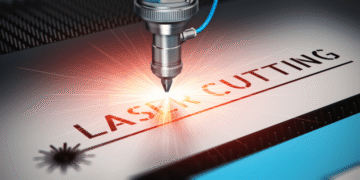In today’s competitive job market, a modern, well-crafted resume is essential to stand out among a sea of applicants. The traditional resume has evolved, and job seekers must adapt to the latest trends and technologies to ensure their resumes make a strong impression. This detailed guide will provide in-depth insights on how to modernize your resume effectively.
1. Choose the Right Format
The format of your resume is crucial in making a great first impression. There are three main types of resume formats:
Chronological Resume:
- Structure: Lists work experience in reverse chronological order, starting with the most recent job.
- Best For: Individuals with a strong work history in a specific field, showcasing career progression.
- Advantages: Easy for hiring managers to read and understand your career trajectory. Preferred by traditional employers.
Functional Resume:
- Structure: Focuses on skills and experiences rather than chronological work history.
- Best For: Those changing careers, with gaps in employment, or with diverse experience.
- Advantages: Emphasizes transferable skills and competencies over job titles and dates. Useful for highlighting specific skill sets.
Combination Resume:
- Structure: Merges elements of both chronological and functional formats. Typically starts with a skills section followed by a detailed work history.
- Best For: Applicants with a solid skill set and consistent work history who want to highlight both.
- Advantages: Provides a comprehensive view of both your skills and career progression. Flexibility to emphasize strengths.
2. Use a Clean, Professional Layout
A clean and professional layout ensures that your resume is easy to read and visually appealing. Key tips include:
Consistent Fonts and Sizes:
- Font Choice: Use easy-to-read fonts such as Arial, Calibri, or Times New Roman.
- Size: Font size should be 10-12 for the main text and 14-16 for headings.
- Uniformity: Maintain consistent font styles and sizes throughout the document.
Bullet Points:
- Usage: Use bullet points to list duties and achievements, making information easily scannable.
- Length: Keep bullet points concise and impactful, ideally one to two lines long.
White Space:
- Importance: Include ample white space to avoid a cluttered look and improve readability.
- Margins: Ensure consistent margins (typically 1 inch on all sides).
Section Headers:
- Clarity: Clearly define sections such as “Work Experience,” “Education,” “Skills,” and “Certifications.”
- Design: Use bold or larger font sizes for section headers to distinguish them from the body text.

3. Leverage Technology
Incorporate technology to make your resume stand out:
PDF Format:
- Consistency: Always send your resume in PDF format to ensure the layout remains consistent across devices.
- Professionalism: PDF is a widely accepted and professional format that preserves formatting.
Resume Builders:
- Tools: Use online resume builders like Canva, Zety, or ResumeGenius for modern templates and designs.
- Customization: These tools offer customizable templates that can be tailored to specific industries or job types.
Applicant Tracking Systems (ATS):
- Optimization: Optimize your resume with keywords from the job description to pass through ATS filters.
- Simplicity: Avoid complex formatting, images, and graphics that can confuse ATS.
- Relevance: Use standard section headings and simple, clear language.
4. Highlight Relevant Skills and Accomplishments
Focus on skills and accomplishments that are relevant to the job you’re applying for:
Skills Section:
- Content: Include both hard skills (technical abilities) and soft skills (interpersonal abilities).
- Customization: Tailor this section for each job application, emphasizing skills that match the job description.
- Examples: Use specific examples such as “Advanced Excel Skills,” “Project Management,” or “Team Leadership.”
Achievements Over Duties:
- Focus: Instead of listing job duties, highlight specific achievements using quantifiable metrics.
- Impact: Show the impact of your work with statements like “Increased sales by 20% within six months” or “Implemented a new system that reduced processing time by 30%.”
5. Incorporate Modern Elements
Add elements that reflect modern resume trends:
Professional Summary:
- Content: Replace the objective statement with a professional summary that provides a brief overview of your qualifications and career goals.
- For inspiration, you can explore various personal summary examples to understand how to effectively convey your strengths
- Length: Keep it concise, around 3-5 sentences.
- Focus: Highlight key achievements, skills, and what you bring to the role.
Hyperlinks:
- Inclusion: Include hyperlinks to your LinkedIn profile, professional portfolio, or personal website.
- Relevance: Ensure the links are relevant to the job and provide additional insights into your professional background.
Visual Elements:
- Subtlety: Integrate subtle visual elements like icons for contact information and skills to enhance visual appeal.
- Balance: Avoid overloading the resume with graphics; maintain a professional look.

6. Showcase Continuous Learning
Demonstrate your commitment to professional growth by showcasing continuous learning:
Certifications and Courses:
- Relevance: List relevant certifications, online courses, and workshops that enhance your qualifications.
- Details: Include the name of the certification, the issuing organization, and the date of completion.
Professional Development:
- Activities: Highlight involvement in professional organizations, seminars, or industry conferences.
- Impact: Mention any roles or contributions you made, such as speaking engagements or committee memberships.
7. Tailor Your Resume for Each Job Application
Customize your resume for each job application to match the job description closely:
Keyword Optimization:
- Usage: Use keywords from the job posting throughout your resume, particularly in the skills and experience sections.
- Tools: Utilize tools like Jobscan or Resume Worded to analyze job descriptions and optimize your resume.
Relevant Experience:
- Emphasis: Emphasize experience and skills that align with the job requirements.
- Customization: Adjust bullet points and achievements to reflect the specific needs of the position.
8. Proofread and Edit
Ensure your resume is error-free and polished:
Proofread:
- Thoroughness: Carefully proofread your resume to catch any spelling or grammatical errors.
- Tools: Use tools like Grammarly or Hemingway to assist with grammar and readability.
Peer Review:
- Feedback: Have a trusted friend or colleague review your resume for feedback.
- Perspective: They can provide an outsider’s perspective and catch mistakes you might have missed.
9. Include a Cover Letter
Always include a tailored cover letter with your resume:
Personalization:
- Address: Address the hiring manager by name if possible, and mention the specific position you’re applying for.
- Customization: Tailor the cover letter to the company and role, showing that you’ve done your research.
Connection to the Role:
- Fit: Explain why you’re a perfect fit for the role and how your experience aligns with the company’s needs.
- Value: Highlight what unique value you bring to the company.
Conclusion
Modernizing your resume is an ongoing process that requires attention to detail, adaptation to new trends, and continuous improvement. By following the steps outlined in this guide, you can create a resume that not only stands out to hiring managers but also accurately represents your professional skills and achievements. Remember, a modern resume is not just a document; it’s a powerful tool to open doors to new career opportunities. Keep updating and refining your resume as your career progresses and as new trends emerge in the job market.













